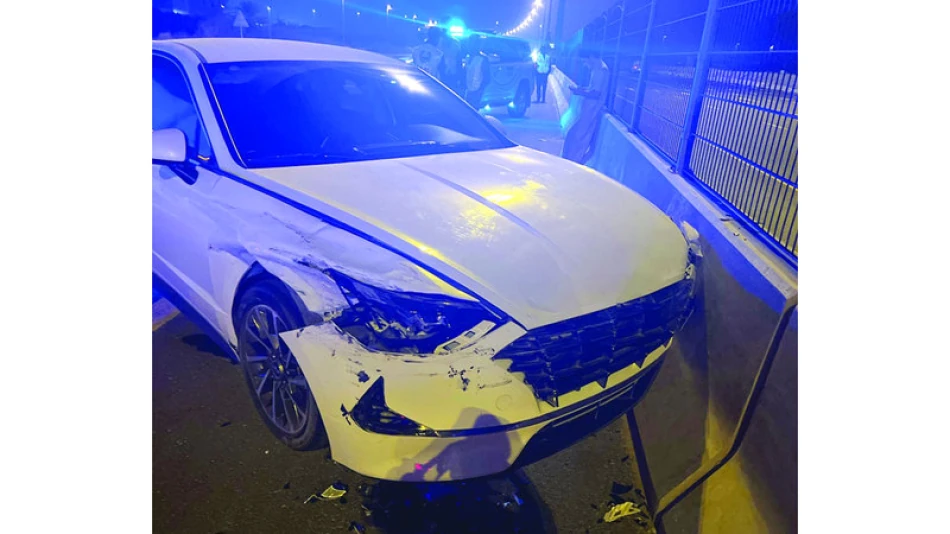
Dubai Police Rescue Driver Whose Vehicle's Cruise Control Malfunctioned
Dubai Police Execute Flawless Highway Rescue as Runaway Vehicle's Cruise Control Malfunctions
Dubai's traffic patrol units demonstrated exceptional crisis management when they successfully guided a driver to safety after his vehicle's cruise control system malfunctioned on a major highway, leaving him unable to control his speed. The incident, which occurred on Sheikh Mohammed bin Zayed Road toward Abu Dhabi, showcased the emirate's sophisticated emergency response capabilities and highlights growing concerns about vehicle automation safety.
Swift Response Prevents Potential Catastrophe
Acting Director of Dubai Police's General Traffic Department, Colonel Jumaa Salem bin Suwaidan, revealed that the operations room received an emergency call from a driver whose vehicle had become unresponsive to both accelerator and brake pedals due to a cruise control malfunction. The car continued moving at a fixed speed, creating a dangerous situation for both the driver and other road users on one of the UAE's busiest inter-emirate highways.
Traffic patrol units mobilized immediately upon receiving the distress call, locating the vehicle within minutes and establishing direct communication with the panicked driver. The response demonstrated Dubai's investment in integrated emergency systems, which have become increasingly important as the emirate positions itself as a global hub for advanced transportation technologies.
Coordinated Escort Operation
The rescue operation involved creating a protective corridor around the runaway vehicle, with patrol cars positioned both ahead and behind to prevent potential collisions. Officers simultaneously cleared other vehicles from the affected lanes while providing real-time guidance to the stranded driver through established emergency protocols.
This coordinated approach reflects Dubai's broader strategy of combining human expertise with technological infrastructure—a model that other cities worldwide are studying as vehicle automation becomes more prevalent. The successful outcome reinforced Dubai's reputation for handling complex urban mobility challenges.
Expert Guidelines for Cruise Control Emergencies
Immediate Response Protocol
Colonel bin Suwaidan emphasized critical steps drivers should take when experiencing cruise control malfunctions. The recommended sequence includes maintaining composure, securing the seatbelt, activating hazard lights and headlights, and immediately contacting emergency services at 999 with precise situation details.
Technical Recovery Methods
Dubai Police outlined a systematic approach to regaining vehicle control: applying consistent, gradual brake pressure; shifting the transmission to neutral position; progressively engaging the handbrake while maintaining firm steering wheel control; and alternating between neutral and drive positions to reduce speed if other methods fail.
These guidelines reflect lessons learned from similar incidents globally, as cruise control systems become standard in most modern vehicles. The detailed protocol suggests Dubai authorities have studied international best practices, particularly from automotive safety agencies in Europe and North America.
Implications for Smart City Infrastructure
This incident occurs as Dubai accelerates its smart city initiatives, including autonomous vehicle testing and advanced traffic management systems. The successful resolution demonstrates that human oversight remains crucial even as cities embrace automation, suggesting a hybrid approach to urban mobility management.
For automotive manufacturers and technology companies operating in the Gulf region, the incident underscores the importance of robust fail-safe mechanisms in vehicle control systems. As the UAE continues attracting international automotive innovation, such real-world testing of emergency response capabilities provides valuable data for future system improvements.
The seamless coordination between Dubai's command center and field units also reinforces the emirate's position as a testbed for integrated urban technologies, potentially influencing how other major cities develop their own emergency response frameworks for an increasingly automated transportation landscape.
 Sara Khaled
Sara Khaled







